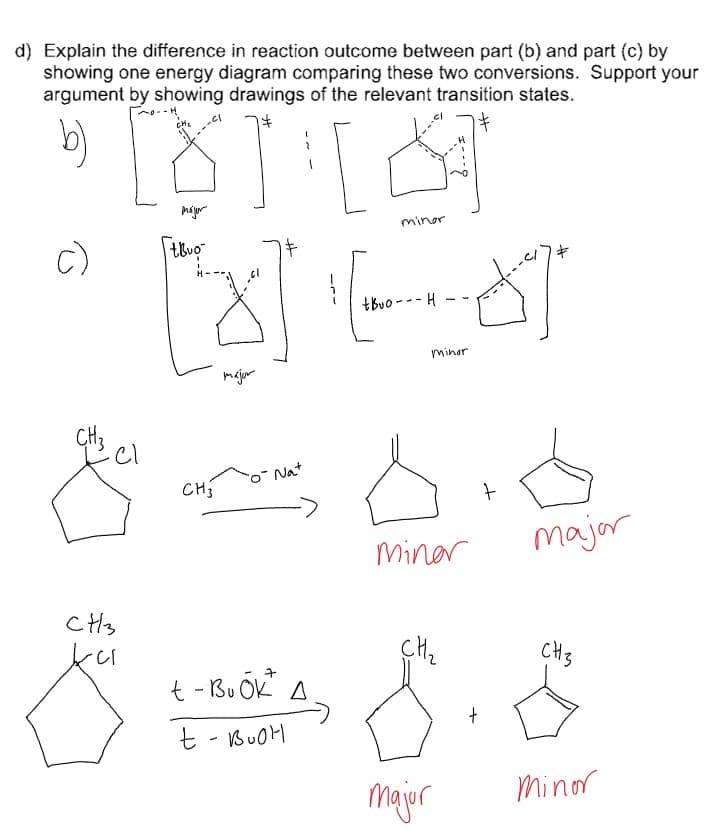d) Explain the difference in reaction outcome between part (b) and part (c) by showing one energy diagram comparing these two conversions. Support your argument by showing drawings of the relevant transition states. b) majer minor c) tBuo --- H minar majer CH3 cl Nat CH Miner major CH3 t - Bu OK A t - BUOH major Minor
d) Explain the difference in reaction outcome between part (b) and part (c) by showing one energy diagram comparing these two conversions. Support your argument by showing drawings of the relevant transition states. b) majer minor c) tBuo --- H minar majer CH3 cl Nat CH Miner major CH3 t - Bu OK A t - BUOH major Minor
Chapter30: Orbitals And Organic Chemistry: Pericyclic Reactions
Section30.SE: Something Extra
Problem 34AP: Bicyclohexadiene, also known as Dewar benzene, is extremely stable despite the fact that its...
Related questions
Question
I drew out the reaction and the transition states but I am not sure how to draw the energy diagram for compounds with similar mechanisms

Transcribed Image Text:d) Explain the difference in reaction outcome between part (b) and part (c) by
showing one energy diagram comparing these two conversions. Support your
argument by showing drawings of the relevant transition states.
májer
minor
c)
tBuo --- H -
minor
majur
CH3
Nat
CH3
Minar
major
CH2
CH3
t - Bu OK A
t - BUOH
major
Minor
Expert Solution
This question has been solved!
Explore an expertly crafted, step-by-step solution for a thorough understanding of key concepts.
This is a popular solution!
Trending now
This is a popular solution!
Step by step
Solved in 2 steps with 2 images

Recommended textbooks for you


Organic Chemistry: A Guided Inquiry
Chemistry
ISBN:
9780618974122
Author:
Andrei Straumanis
Publisher:
Cengage Learning


Organic Chemistry: A Guided Inquiry
Chemistry
ISBN:
9780618974122
Author:
Andrei Straumanis
Publisher:
Cengage Learning